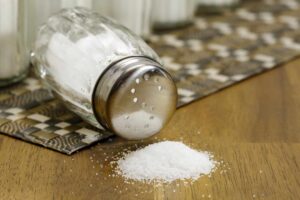Salt has a longer history in the lives of humans than you might expect. We use salt for almost everything, from using it as money in the ancient past, to cleaning our pots and pans, to the next generation of nuclear reactors. While salt comes in different forms, sodium chloride gets the most attention in both its use and its shipping.
For this reason, it’s important to get to know what safety guidelines and information is available on using and storing the chemical.
Are you ready to get to know more about sodium chloride? You might be surprised by what you read next, so keep scrolling!
Sodium Chloride Uses
There are so many places you can find sodium chloride in almost any industry, but only an estimated 6% is produced for food! Here are a few market segments that we might recognize the use of salt in:
- Food
- Medicine
- Science
- Industry
A lot of sodium chloride is used to make rubber and plastics. Because salt is a natural emulsifier it helps to bind water and oil together. Normally they would stay separate, but because salt is a “middle man” between them we can get them to stick together.
When it comes to pottery, once a kiln is over 2000°F, or almost 1100°C, sodium chloride salt can be added, which turns to vapor and reacts with the silica in the clay pottery. This chemical reaction melts the outside layer of silica and turns it into a hard ceramic coating to protect the clay.
In medicine, saline solution, or sodium chloride in water, is mixed in various ways for cleaning wounds, giving electrolytes, and more.
Because salt is necessary for humans to live, it doesn’t only condition water but hydrates us. When it is intravenously administered in a hospital setting, it also serves as a medium for many medicines in a hospital setting.
There are so many uses for sodium chloride, it’s impossible to list them all here.
How Safe Is Sodium Chloride?
Sodium chloride is fairly safe for humans and most animals. The U.S. Food and Drug Administration, or FDA, recognizes it as “GRAS” or “generally recognized as safe.”
This kind of GRAS status means that it has a history of common use and safety, in its normal intended use. The FDA does require, though, that the sodium content of food must be included on food labels.
While salt is common and even necessary for our lives, it can also cause increased heart disease, stroke, and high blood pressure if we eat too much of it. The WHO guidelines more than 2g of sodium per day. That means it’s better to consume less than 5g of salt per day.
Since heart disease is a leading cause of death in the world, salt masked in sweet, highly processed foods is a major concern.
Is There a Guide for How to Use and Store It?
As with any chemical, there are guidelines for how to store and transport salt. For example:
- Sufficient ventilation for any work area
- Remove dust to prevent air-borne spread
- Avoid eye contact
- Wear eye protection if you expect it could be air-borne
- Avoid skin contact
- Wear protective equipment like rubber gloves when handling
It’s known that normal handling of salt isn’t going to have a significant impact on health or be a normal health hazard. However, salt in various forms can be abrasive and cause abrasions.
Removing contact lenses if there is eye exposure is a good idea, even though saline solutions are used in cleaning contacts. If it scratched your cornea, you may need medical attention.
Highly concentrated salt slurries can irritate or even burn tender skin over time. If you expect extended exposure to sensitive areas in high concentration it’s best to prepare with personal protective equipment or PPE.
While inhaling salt vapor can show benefit in a controlled situation, too much exposure can cause irritation to your respiratory system. Try to keep in a ventilated area.
Cleanup, Storage, and Transport
In the case of a spill of sodium chloride, try to vacuum the spill. If a vacuum isn’t available for the job, avoid dry-sweeping to prevent air-borne salt dust. Wet-sweeping can also be effective.
Cleaning the area with a detergent and water will help prevent staining. Also, label the material for disposal in a closed container, since it’s now contaminated.
If you’re storing or shipping sodium chloride, it should be in a sealed container. The environment should be cool, dry, well-ventilated. Try to keep salt away from excessive heat, because it has the possibility of reacting with other chemicals.
These details and more are outlined in SDS, or Safety Data Sheets.
SDS outline how chemicals or other products should be handled, stored, and used in accordance with standard safety practices. There are many SDS management solutions available today.
If you are storing or transporting any chemical, even one that has GRAS status, an SDS management system or on-hand SDS are usually required.
Sodium Chloride: The Salt of Life
You probably didn’t expect to learn so much about such a “simple” chemical like salt. We use it for medicine, for food, for science, and to survive. But you must treat sodium chloride with the respect it deserves. Despite how “common” it is, it’s still a chemical that needs attention when shipping or storing.
Sodium chloride is only one chemical that we deal with every day. At KHA-Online SDS, we’re dedicated to providing an on-demand record of the Safety Data Sheets, SDS, you need access to. Any device, anywhere, you have the SDS you need at hand.
Want to know more about the service? Get in touch today and schedule a demo!


